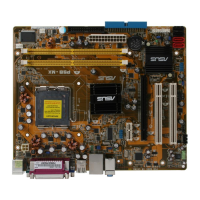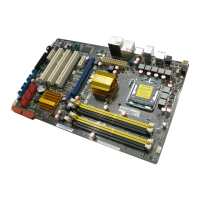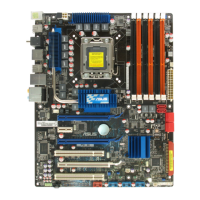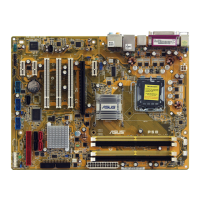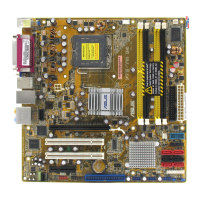2-14 Chapter 2: Hardware information
• If you install four 1 GB memory modules, the system may detect less than
3 GB of total memory because of address space allocation for other critical
functions. This limitation applies to Windows XP 32-bit version operating
system since it does not support PAE (Physical Address Extention) mode.
• If you install Windows XP 32-bit version operating system, we recommend
that you install less than 3GB of total memory.
Notes on memory limitations
• Due to chipset limitation, this motherboard can only support up to
8 GB on the operating systems listed below. You may install a maximum of
2 GB DIMMs on each slot, but only DDR2-533 and DDR2-667 2 GB density
modules are available for this configuration.
32-bit 64-bit
Windows
®
2000 Advanced Server Windows
®
XP Professional x64 Edition
Windows
®
Vista x64 Edition
2.4.2 Memory congurations
You may install 256 MB, 512 MB, 1 GB, and 2 GB unbuffered non-ECC DDR2
DIMMs into the DIMM sockets.
• You may install varying memory sizes in Channel A and Channel B. The
system maps the total size of the lower-sized channel for the dual-channel
configuration. Any excess memory from the higher-sized channel is then
mapped for single-channel operation.
• Always install DIMMs with the same CAS latency. For optimum compatibility,
it is recommended that you obtain memory modules from the same vendor.
•
Due to chipset resource allocation, the system may detect less than 8 GB
system memory when you installed four 2 GB DDR2 memory modules.
• This motherboard does not support memory modules made up of 128 Mb
chips or double sided x16 memory modules.
Mode
Sockets
DIMM_A1 DIMM_A2 DIMM_B1 DIMM_B2
Single-Channel
- - Populated -
Populated - - -
Dual-channel (1)
Populated - Populated -
Dual-channel (2)
Populated Populated Populated Populated
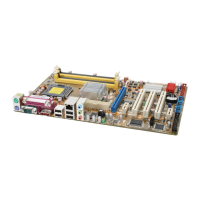
